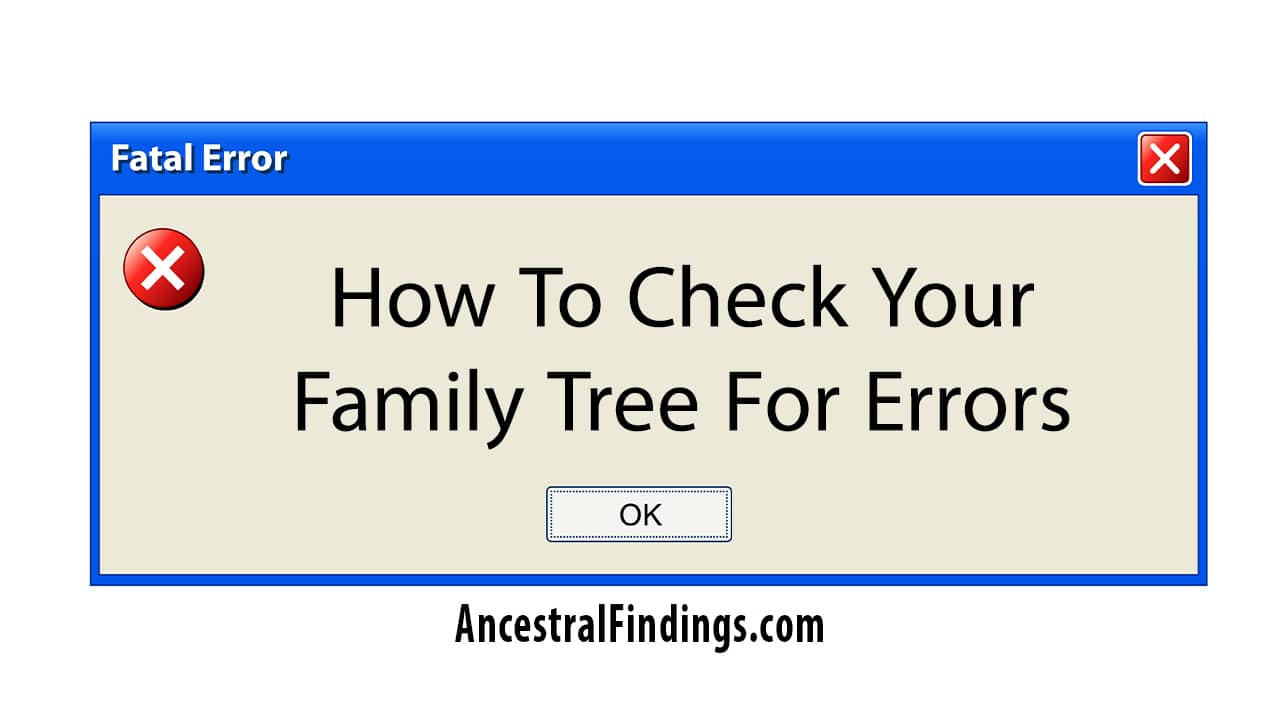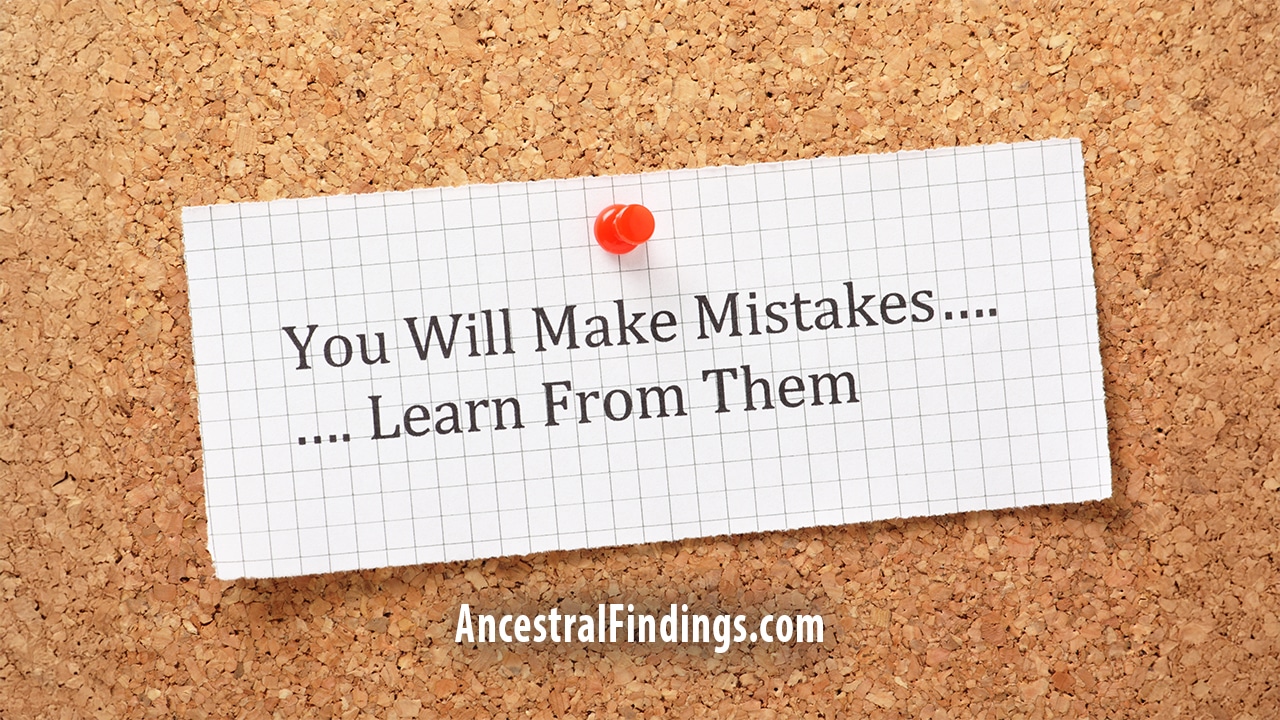There is a lot of guesswork and uncertainty in genealogy. People in the past may have put the wrong information on old records, either from genuinely not knowing, or from having something they wanted to hide. Mistakes can be made in transcriptions of documents from one location to another; even tombstones are known to sometimes have mistakes on them from the stone cutter. Census takers make mistakes in the spelling of names (and even the dates and places of birth of the householders they enumerate). When this was a popular thing to do, those who published family genealogies in the 19th century often relied on legend, gossip, and the erroneous family stories other people gave them.
There is a lot of room for human error in genealogy research, and you will undoubtedly come across it, either in the work of others or through mistakes you make in your own work. Even the best genealogists will once in a while discover they got an entire line wrong based on one incorrect assumption, misinterpretation of a record, or by obtaining a faulty record. With so much room for making mistakes, how do you know you’ve gotten it right? How do you know if your genealogy research is successful?
The fact is, except for mother/child relationships (and even these might be non-biological without you knowing it if there was a secret adoption), genealogy is never a 100 percent sure thing. Even the best, most carefully carried out research can still potentially be proven wrong by a future researcher who discovers a clue no one ever noticed or that has just come to light.
However, there are a few ways to be as sure as you can ever possibly be that your research reveals the correct family relationships and information. Here are five ways you can tell if your genealogy research is most likely correct.
1. You Have Found the Same Information in More Than One Set of Records
The more often a family relationship, name, birth or death date, marriage date, or another important piece of family information is repeated through various record sets, the more likely it is to be correct. This is especially true if the records are primary records (records generated at the time of the event they mention).
For example, if you find the same names of parents or birth date or any other type of information for an ancestor in:
- Birth and death certificates
- Old newspaper birth and death announcements or other articles
- Wills
- Military records
the more reason you have to trust that the information is correct. Unless you find something drastic later that makes you question this information, or that refutes it entirely, you can be reasonably sure your research into this person is successful.
2. Your Research Matches the Research of Other People
In the online age, you are bound to come across people who are distant cousins or relatives by marriage who are working on your line. They may have been working on it for a while, possibly just as long as you or longer. It is important to compare research with these people.
If you find that your research matches up, including the sources you both used to arrive at your conclusions, you can have a great deal of confidence that your research is correct. If there are discrepancies in your research, then one of you is wrong, and you both need to look at your work again.
If you can find other people who have worked on the same line, try matching up your research with theirs. In fact, the more people you find who have done the same research and whose research is identical to yours, the surer you can be that your research is correct.
3. You Can Reverse Engineer Someone Else’s Work
Those big genealogy books of the 19th century, though notorious for containing mistakes, also contain many correct things. Most of them come with annotations in the form of footnotes and/or endnotes as to where the author got the information used to write the genealogy.
Use these sources and find them yourself. It is always good genealogical practice to look at the original record in any case. You may find information on it the original researcher missed. If you can go through all the sources the author used and still come to the same conclusions as him or her, then you can be as sure as you can be that your research is successful.
4. Look for Confirmation for Your Wild Assumptions
Sometimes, in genealogy research, we have to take a leap of faith in our conclusions due to a lack of solid evidence. Even the well-respected genealogical journals often contain articles where the author made their conclusion based on an assumption. However, those assumptions are always backed up with ample amounts of secondary evidence (evidence where the record doesn’t outright state a family relationship or date, but one can be inferred from the information that is there).
If you have made a large assumption in your research, look for secondary evidence to back it up. The more secondary evidence you can find, the better. Once you’ve accumulated enough of it, you are at a point of being as sure as you can be about the accuracy of this line.
Of course, the best thing is if you one day discover a primary record that confirms all of this secondary evidence. Keep looking for a primary source, even if you have a lot of secondary evidence. Just because you haven’t found one yet doesn’t mean it doesn’t exist. It may be out there waiting for you to find it.
5. Get DNA Evidence
While still relatively new to the world of genealogy, DNA has a remarkable ability to prove and disprove family relationships that would once have been impossible to confirm. While DNA may not be able to tell you the exact names of your particular ancestors, it can definitely put you in a suspected ancestor’s family (or take you out of it) without a doubt.
If you have a person in your family tree with whom you have a suspected but unconfirmed direct relationship, DNA can confirm or deny it for you. You just need to get at least one (but the more the better) modern descendant of that person to compare their DNA with yours. The various DNA testing companies online can then tell you if the two of you are genetically related within a certain number of generations.
The more people you can get to take the test, the more accurate your results will be, especially if one person doesn’t match up with all of the rest of the people who tested into the family. DNA offers the surest way to confirm the success of your genealogy research, as there is no room for human error in DNA results.
Genealogy is imprecise and uncertain by nature. There is always a chance a relationship or information about an ancestor’s birth, death, marriage, or anything else is wrong. This is truer the farther back into the past you go. People weren’t always as careful about accurate record keeping as they are now, and making up noble lines of descent to make a family seem more prestigious was common. While you can never get around these things entirely, you can make sure your genealogy research is as accurate and successful as it can be by using the five tips above. Being as sure as you can be is the same as declaring victory in genealogy.






